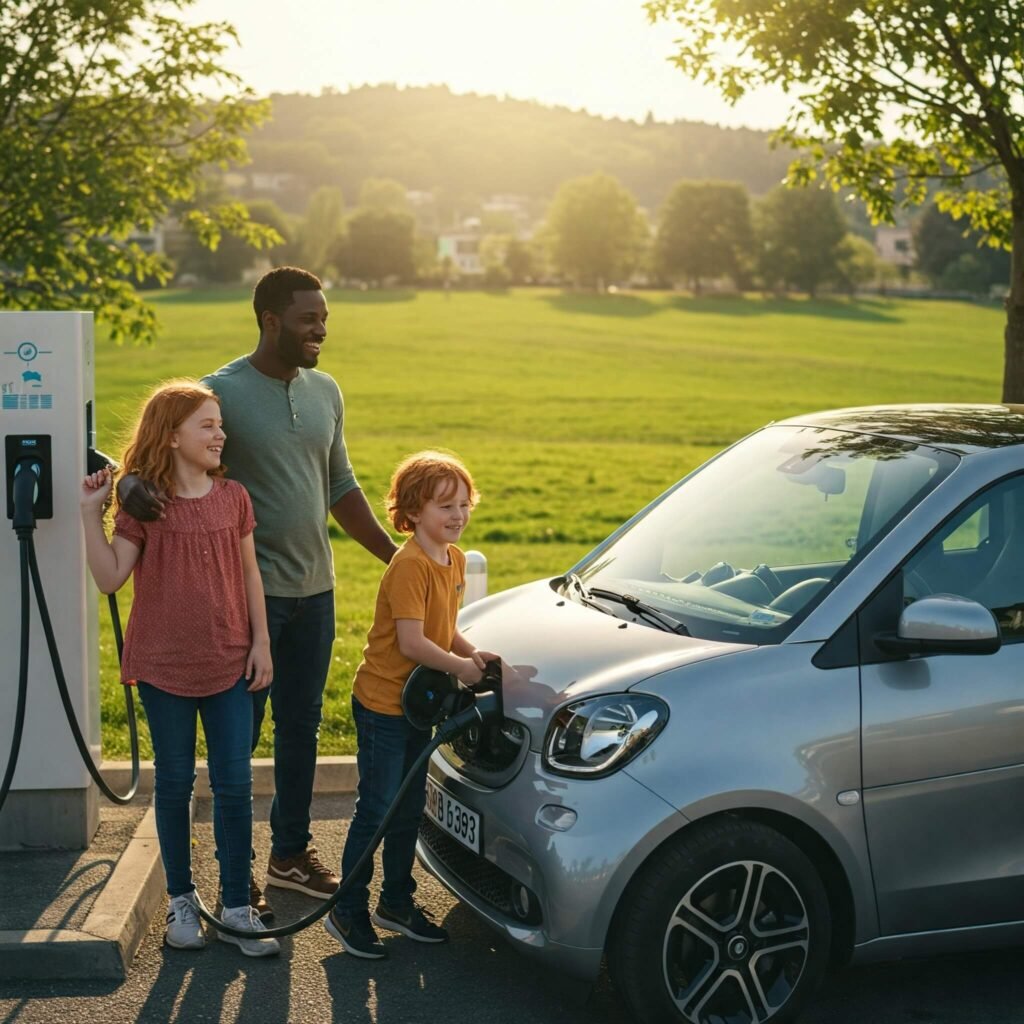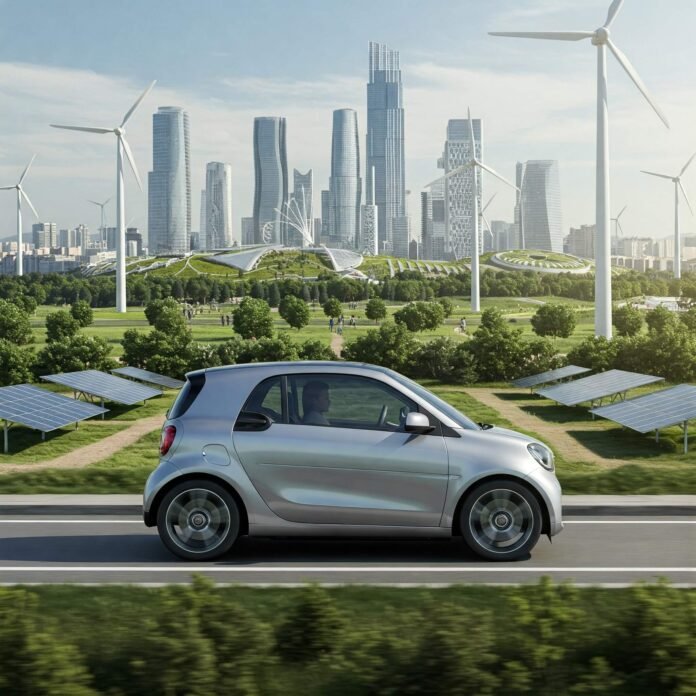The 2025 fuel economy standards are here, and they’re shaking up the automotive world. Washington’s latest regulations, set by the National Highway Traffic Safety Administration (NHTSA), aim to push carmakers toward greater fuel efficiency and lower emissions. But what does this mean for smart cars—those tech-packed, eco-friendly vehicles like hybrids and electric models? Will these standards fuel innovation or put the brakes on progress? In this post, we’ll dive into the 2025 fuel economy war, explore its impact on smart cars, and share insights on what drivers and manufacturers can expect. Let’s hit the road!

Why 2025 Fuel Economy Standards Matter
The Corporate Average Fuel Economy (CAFE) standards, updated for 2024-2026, require an industry-wide fleet average of approximately 49 miles per gallon (mpg) by 2026. This is a significant leap from the 2021 average of 39 mpg, reflecting Washington’s push for energy independence and reduced carbon emissions. For smart cars, these standards are a double-edged sword: they encourage innovation in hybrids and electric vehicles (EVs) but challenge manufacturers to meet stringent targets without compromising affordability.
According to the NHTSA, these regulations could save over 200 billion gallons of fuel by 2050 and reduce oil consumption by millions of barrels daily. But critics argue that the costs of compliance could raise vehicle prices, potentially slowing the adoption of smart cars.
Key Impacts of 2025 Fuel Economy Standards:
- Increased R&D: Carmakers are investing heavily in hybrid and EV technology to meet mpg targets.
- Consumer Savings: Higher fuel efficiency means lower gas costs for drivers.
- Environmental Benefits: Reduced emissions align with global climate goals.
Smart Cars in the Crosshairs: Opportunities and Challenges
Smart cars—defined by their advanced tech, connectivity, and eco-friendly designs—are at the heart of the 2025 fuel economy standards. Models like the Toyota Prius, Tesla Model 3, and upcoming hybrids from Ford are built to thrive under these regulations. However, the road isn’t always smooth.
Opportunity: Accelerating Hybrid and EV Innovation
The 2025 fuel economy standards incentivize automakers to prioritize hybrids and EVs, which already boast high mpg ratings. For example, the Maruti Grand Vitara hybrid achieves an impressive 27.97 kmpl (roughly 66 mpg), setting a benchmark for compact SUVs. Washington’s push could lead to:
- More affordable EVs with longer ranges.
- Advanced battery tech for faster charging.
- Wider availability of hybrid models across price points.

Challenge: Rising Costs and Market Pressures
Meeting the 2025 fuel economy standards requires significant investment in research, development, and production. The Natural Resources Defense Council (NRDC) warns that weakening these standards could cost drivers more in fuel expenses, but strict compliance might increase car prices. For smart cars, this creates a dilemma:
- Higher Prices: Advanced tech could make vehicles less affordable for budget-conscious buyers.
- Supply Chain Strains: Battery and chip shortages may delay production.
- Consumer Resistance: Some drivers may resist EVs due to range anxiety or lack of charging infrastructure.
Washington’s Role: Balancing Regulation and Innovation
Washington’s 2025 fuel economy standards are enforced by the NHTSA and the Environmental Protection Agency (EPA), which set greenhouse gas (GHG) and mpg targets. These regulations stem from a 2012 Obama-era plan to hit 54.5 mpg by 2025, later adjusted to 51.4 mpg under Trump’s revisions. The current 49 mpg target for 2026 reflects a compromise, but it’s still ambitious.
How Washington Shapes Smart Cars:
- Incentives for EVs: Tax credits and rebates make smart cars more appealing.
- Stricter Penalties: Non-compliant manufacturers face hefty fines, pushing them toward eco-friendly designs.
- Research Grants: Funding for battery and AI-driven automotive tech boosts innovation.
However, political debates persist. Project 2025, a controversial policy blueprint, advocates rolling back standards to 2007 levels, which could disrupt progress. Washington’s decisions will determine whether smart cars soar or stall.
What Drivers Can Expect from 2025 Fuel Economy Standards
For consumers, the 2025 fuel economy standards promise a greener, more efficient driving experience—but with some caveats. Here’s what to watch for:
- More Smart Car Options: Expect a surge in hybrid and EV models, from compact hatchbacks to luxury sedans.
- Higher Upfront Costs: Smart cars may carry a premium due to advanced tech, though fuel savings could offset this.
- Improved Tech: Features like AI-driven navigation and energy-efficient systems will become standard.
Actionable Tips for Drivers:
- Research Incentives: Check for federal and state EV tax credits to lower costs.
- Compare Models: Look for hybrids or EVs with high mpg ratings, like the Toyota Camry Hybrid (51 mpg).
- Plan for Charging: Invest in home charging stations or locate public chargers for EVs.

The Future of Smart Cars Under 2025 Fuel Economy Standards
The 2025 fuel economy standards could be a game-changer for smart cars, driving innovation while testing manufacturers’ adaptability. If Washington maintains its commitment to strict regulations, we could see a boom in eco-friendly vehicles that blend cutting-edge tech with affordability. However, political shifts or industry pushback could slow progress, leaving smart cars in limbo.
Predictions for 2025 and Beyond:
- Hybrid Dominance: Hybrids may outpace pure EVs due to their versatility and lower costs.
- AI Integration: Smart cars will leverage AI for predictive maintenance and optimized fuel use.
- Global Influence: Washington’s standards could inspire stricter regulations worldwide.
For now, the fuel economy war is heating up, and smart cars are on the front lines. By staying informed and choosing eco-friendly models, drivers can play a role in shaping a sustainable future.
External References:





























